How to raise Jasper Picture appreciation of Jasper
What is Jasper?
Green leaf Jasper, also known as Douban Green, Pepper Grass, Emerald Pepper Grass, is a perennial evergreen herb of the genus Piperaceae.
Plant height 20-25cm, stem round, branched, light green with purplish red markings. Leaves alternate, slightly fleshy, long oval, dark green, glossy, as long as 15cm, base cuneate, petiole short.
Spikes, 2. 5-18cm long, florets green-white, pedicels shorter than spikes, smooth glabrous. Fruit with curved acute beak. It is the representative species of erect Douban green.
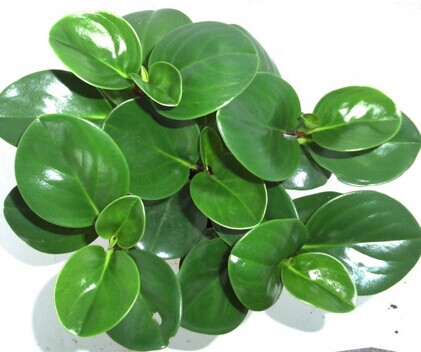
The main horticultural varieties are:
1. The leaves and beans are green, with red spots on the stem, dark green leaves, yellow spots on the edge, and then nearly white.
2. Green gold, leaves with macula.
Origin and habits: originally from the West Indies, Panama, northern South America. Like the warm and humid semi-overcast environment. The suitable temperature for growth is about 25 ℃, and the lowest is not less than 10 ℃. It is not resistant to high temperature, requires high air humidity, avoid direct sunlight, and likes moist soil with loose, fertile and good drainage.
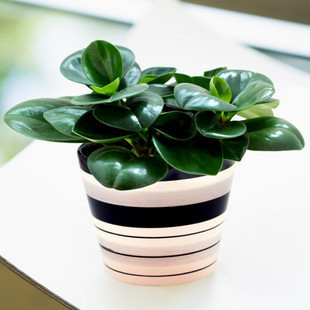
Propagation and cultivation: multipurpose cuttings and split-plant propagation
1. Cuttings: select strong top branches from April to May, about 5cm as cuttings, and keep 1-2 leaves in the upper part. After the cut is dried, it is inserted into the wet sand bed. You can also insert leaves, cut the leaves with petioles with a knife, dry them slightly, then insert them obliquely on the sand bed, and take root in 10-15 days. In a greenhouse with temperature control equipment, it can be carried out all year round.
2. Ramet: mainly used for the reproduction of colored leaf varieties. The basin soil can be made of rotten leaf soil, peat soil and part of perlite or sand, and an appropriate amount of base fertilizer is added. During the growing period, topdressing should be applied once a month, watering should be done with 1-2 days' water in the pool, and watering should be controlled in winter. The change of temperature directly affects the color of leaves, the optimum temperature in winter is 18-20 ℃ for colored leaves and about 15 ℃ for green leaves.
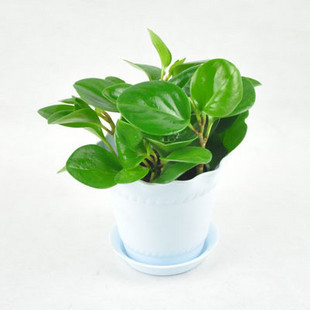
What about Jasper? what should we pay attention to?
Jasper is afraid of heat in summer, so it can be cooled by spraying water under the shade shed, but it should be noted that overheating and dampness will cause stems and leaves to blacken and rot. Place plenty of light in winter and avoid direct sunlight in summer. Change the basin every 2-3 years. This variety has few diseases and insect pests, and leaf spot and stem rot often occur when the soil is too wet, and there are occasional shell insects and slugs, which should be prevented and controlled in time.
Jasper leaves green and smooth, beautiful plant shape, but also more shady, small and lovely, placed in front of the window, table, coffee table and other places, do not have elegant interest, so how to raise Jasper the best? What should I pay attention to?
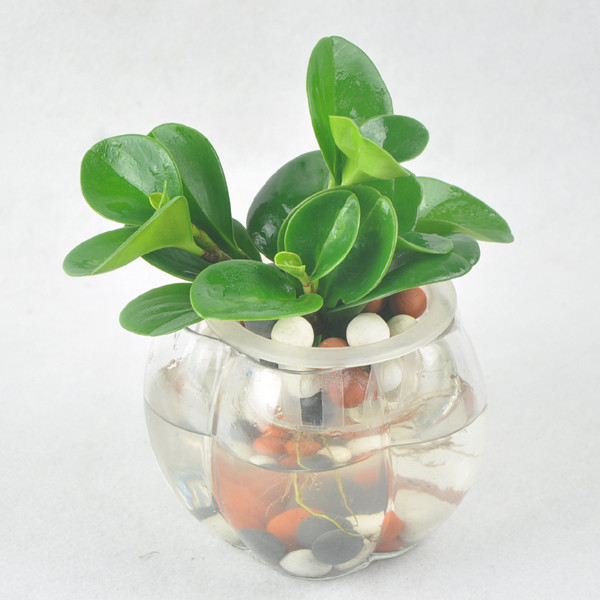
1. Matrix demand
Matrix: like to grow in loose and fertile sandy soil with good drainage and rich in humus, and have poor growth potential in clay. Generally, the substrate can be mixed with rotten leaf soil, river sand and a small amount of mature organic fertilizer, and peat soil and perlite can be mixed under certain conditions.
2. Lighting demand
Lighting: like semi-overcast or scattered light, except for sufficient light in winter, shading is needed in other seasons, especially in summer. If placed in a shady environment, it is easy to grow, the branches grow, and the ornamental is reduced, which is not advisable. Under the semi-overcast condition, the leaf color is brighter and the gloss is better, especially the variegated leaf variety, the demand for sunlight is a little higher.
3. Temperature demand
Temperature: like the warm environment, the suitable temperature for growth is between 20-30 ℃, the overwintering temperature is better kept above 10 ℃, the growth stops below 10 ℃, and it is easy to freeze under 5 ℃.
4. Humidity demand
Humidity: like the humid growth environment, grow luxuriantly in the humid environment, bright leaf color, strengthen foliar spraying or sprinkling water in the growth environment when the temperature is high or the air is dry, in order to maintain high air humidity, which is very beneficial to the growth of the plant. It can also adapt to a short dry environment, but not for a long time, generally should be kept at about 70%.
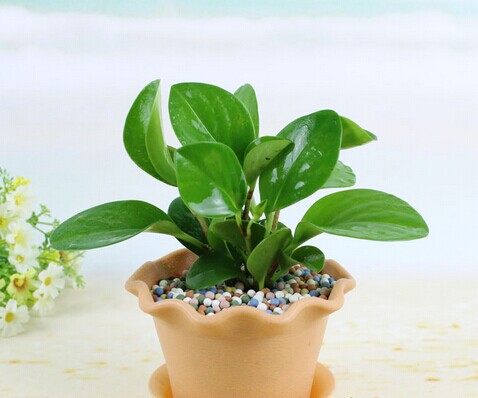
5. Watering frequency
Watering: prefer water, not resistant to drought, watering frequently during the growing period, watering more water when the temperature is higher than 25 ℃ or when the air is dry, but also to prevent waterlogging, when the temperature is lower than 25 ℃, the basin soil surface should be watered thoroughly when the temperature is less than 10 ℃, it can be dried for several days without watering.
6. Fertilization matters
Fertilization: a small amount of fertilizer is needed when the temperature is higher than 18 ℃, and less or not when the temperature is lower than 18 ℃ or higher than 30 ℃. Fertilization should be carried out in a small amount and many times, and diluted fertilizer solution instead of clear water irrigation is the best. It is not tolerant to raw fertilizer and thick fertilizer, and it is easy to cause fertilizer damage. Foliar spraying fertilizer solution can also be used for fertilization, and the effect is good. Fertilizers are mainly nitrogen fertilizer and potassium fertilizer, followed by phosphate fertilizer.
7. Pruning frequency
Pruning and reproduction: the newly propagated seedlings will pick the heart to increase the number of branches when the seedling is about 10 meters high, so that the plant type is fuller and the appreciation value is higher. The pruning of large plants is generally determined according to the growth trend, short cut and long branches, which can be used as cutting material, easy to take root, can be inserted in clean river sand or vermiculite, or directly in sandy soil. Propagation can also be carried out by leaf cuttings and ramets. In general, the ambient temperature needed for reproduction is between 20 and 25 ℃, and the leaves should be inserted upright or slightly tilted into the river sand with a petiole, and the depth of sand entry is 1 stroke 4-1 stroke 3 to keep the substrate moist and the air moist.
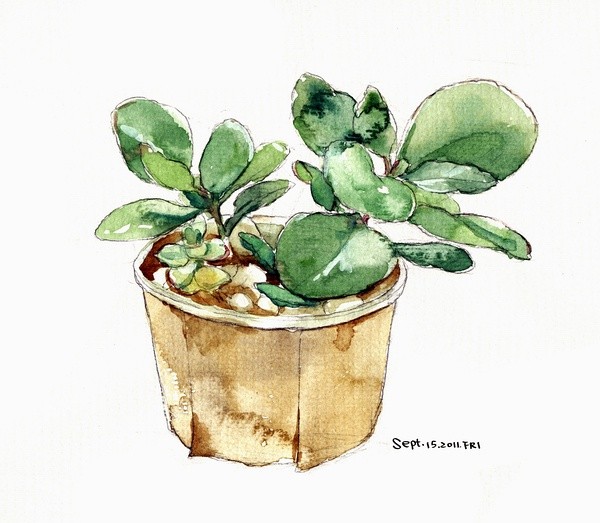
When the temperature is below 25 ℃, the surface of the basin soil should be watered thoroughly when it is dry. When the temperature is below 10 ℃, it can be dried for several days without watering.
6. Fertilization matters
Fertilization: a small amount of fertilizer is needed when the temperature is higher than 18 ℃, and less or not when the temperature is lower than 18 ℃ or higher than 30 ℃. Fertilization should be carried out in a small amount and many times, and it is best to use diluted fertilizer solution instead of clear water. It is not tolerant to raw fertilizer and thick fertilizer, and it is easy to cause fertilizer damage. Foliar spraying fertilizer solution can also be used for fertilization, and the effect is good. Fertilizers are mainly nitrogen fertilizer and potassium fertilizer, followed by phosphate fertilizer.
7. Pruning frequency
Pruning and reproduction: the newly propagated seedlings will pick the heart to increase the number of branches when the seedling is about 10 meters high, so that the plant type is fuller and the appreciation value is higher. The pruning of large plants is generally determined according to the growth trend, short cut and long branches, which can be used as cutting material, easy to take root, can be inserted in clean river sand or vermiculite, or directly in sandy soil. Propagation can also be carried out by leaf cuttings and ramets. In general, the ambient temperature needed for reproduction is between 20 and 25 ℃, and the leaves should be inserted upright or slightly tilted into the river sand with a petiole, and the depth of sand entry is 1 stroke 4-1 stroke 3 to keep the substrate moist and the air moist.

Related
- Wuhan Hospital Iron Tree Blooming Result Was Instantly Frightened by the Gardener Master
- Which variety of camellia is the most fragrant and best? Which one do you like best?
- What is the small blue coat, the breeding methods and matters needing attention of the succulent plant
- Dormancy time and maintenance management of succulent plants during dormancy
- Minas succulent how to raise, Minas succulent plant pictures
- What are the varieties of winter succulent plants
- How to raise succulent plants in twelve rolls? let's take a look at some experience of breeding twelve rolls.
- Attention should be paid to water control for succulent plants during dormant period (winter and summer)
- Watering experience of twelve rolls of succulent plants
- Techniques for fertilizing succulent plants. An article will let you know how to fertilize succulent plants.



